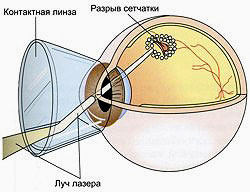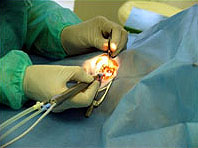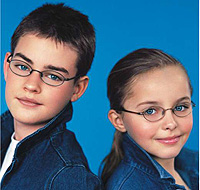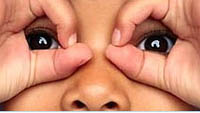Lasers. They are used in industry, in technique, in science, in medicine. However, it is not always clear, well, which laser beam has such many applications. What is laser coagulation? What happens to the retina? We will try to answer these questions in our article
Content
The purpose of laser treatment is the creation of spikes between the retina and the vascular shell to be. For this, lasers coagulators are used, which cause the formation of local retinal microjectories (Laser Aagules).
Laser treatment is applied
-
 In order to prevent retinal detachment (preventive laser bud). Laser coagulation is used to distinguish dangerous retinal dystrophy (first of all «Gridty» and «Trail snail»). To identify them, it is necessary to carefully inspect the periphery of the eye dna in the conditions of maximum mydriasis (with the maximum expanded pupil). Such a study must be carried out at least once every 6 months to patients with increased risk of retinal detachment development (myopia, the presence of retinal detachment for the nearest relatives, transferred in the past operation on the organ of sight, etc.).
In order to prevent retinal detachment (preventive laser bud). Laser coagulation is used to distinguish dangerous retinal dystrophy (first of all «Gridty» and «Trail snail»). To identify them, it is necessary to carefully inspect the periphery of the eye dna in the conditions of maximum mydriasis (with the maximum expanded pupil). Such a study must be carried out at least once every 6 months to patients with increased risk of retinal detachment development (myopia, the presence of retinal detachment for the nearest relatives, transferred in the past operation on the organ of sight, etc.).
-
In order to deliver the already existing retinal detachment (therapeutic laser bud). As a rule, the degradary laseroagulation can be applied in the case of a local flat retinal detachment, in cases where it is impossible to carry out radical surgery for any reason (for example, with severely general condition of the patient).
-
In order to further coagulate the rupture zone after a surgical operation for retinal detachment.
The laser laser procedure is carried out under local anesthesia (after instillation of anesthetic solution). A special contact lens is installed on the eye (trummer goldman lens), which allows focusing laser radiation to any section of the eye don.
Conducting laser retina
 The zone of the gap or the local retinal detachment is eliminated by several rows of laseroagules.
The zone of the gap or the local retinal detachment is eliminated by several rows of laseroagules.
For the formation of a solid chorioretinal spike (spikes between vascular shell and retina) required – About 10-14 days. The absence of the progression of retinal detachment, its distribution abroad coagulites is a reason to consider this laser -ugulation successful.
When carrying out too much «tough» Laser Aagulation of large on the square area of the retina It is possible to develop the following complications: Exudative retinal detachment, detachment of the vascular shell (with proper treatment, these complications are resolved for several days), degenerative changes in the macular region (maculopathy).
After successful prophylactic laseroagulation, at least 1 time in 6 months, and on the recommendation of the doctor and more often, it is necessary to produce a prophylactic examination of the end of the eye bottom of both eyes with a wide pupil for the appearance of new zones of retinal degenerations or the occurrence of thinning and retinal breaks in previously identified zones. Preventive laser budding of such sites will allow several times to reduce the risk of retinal detachment and avoid loss of visual functions.









